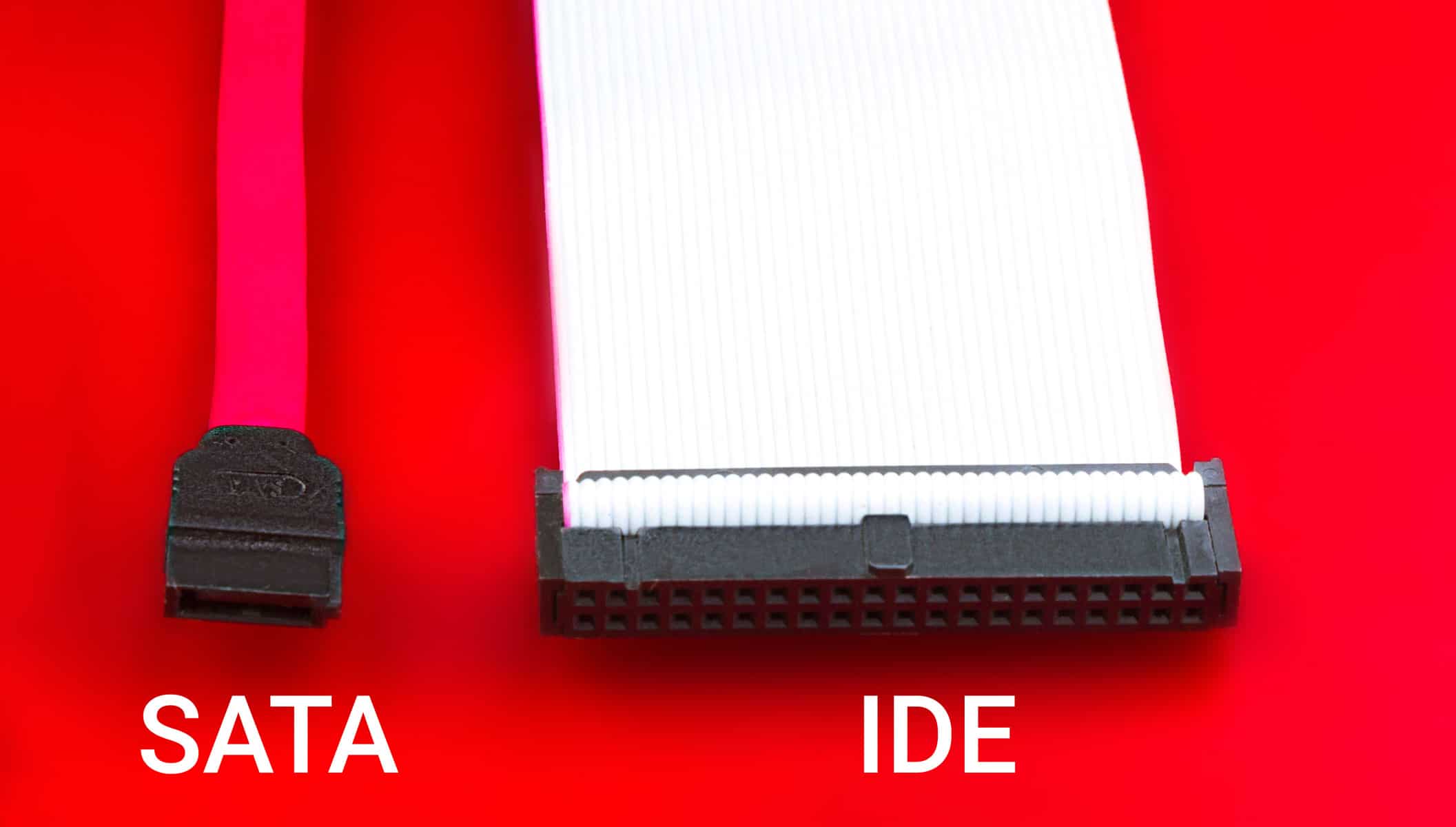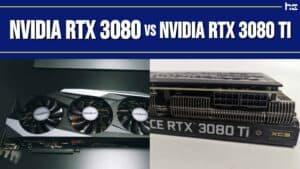Both IDE and SATA are similar in function. The IDE is just an older version of SATA. IDE, which simply stands for Integrated Drive Electronics, is just a connector used for storage devices that are directly linked to a personal computer. On the other hand, SATA, which stands for Serial Advanced Technology Attachment, is just an interface that aids in data transfer between storage devices and a computer’s bus.
Nowadays, SATA is used by most people because it is very easy, less complicated, and convenient to use and figure out. Both IDE and SATA use certain different types of connectors, so they can’t be interchanged without the use of an adapter.
The main difference between the two is that IDE offers a parallel connection to directly connect the storage device to the interface of the computer bus. On the other hand, SATA offers a serial connection to directly connect the computer bus to the storage device.
The data transfer speed rate for the IDE ranges between 5MB/s and 133MB/s. The parallel transfer wire mode can reach a maximum speed of 133/s. SATA was improved with better speed rates. The first SATA generation speed rate was 150 MB/s, just the same as PATA/133. The newest SATA generation (SATA 3.0), which was officially released on May 27, 2009, speed rate is 600 MB/s where motherboards and hard drives are commonly used.
SATA is more advanced compared to IDE. Though they both have the same similarities of serving the same purpose, SATA is the best to use nowadays as manufacturers only create motherboards that have the SATA connectors while few create motherboards that have the IDE connectors.
IDE vs SATA: Side-by-Side Comparison
| IDE | SATA | |
|---|---|---|
| What it is: | IDE (Integrated Drive Electronics) is an electronic standard interface that allows connection between a computer’s bus motherboard and the storage device like the computer’s disk. | SATA (Serial Advanced Technology Attachment) is a computer bus port that connects host bus adapters directly to mass storage devices like optical drives, solid-state drives, and hard disk drives. |
| Launch: | IDE was launched in 1986. | The first revision of SATA was released back on January 7, 2003. |
| Transfer rate: | The data transfer rate for IDE is up to 133/s | The data transfer rate for SATA is up to 600MB/s. |
| Connection type: | The connection type for IDE is parallel | The connection type for SATA is a serial connection. |
| Jumper: | In most computer systems, it is manageable to have more than just one hard drive. To connect the different IDE drives, it is necessary to chain the ribbon cables from one cable to the other. The system of the computer doesn’t have any idea on which is the main drive and which one they should load the OS. | SATA drives don’t necessarily need jumpers to operate. Each drive is directly connected to the motherboard. To set the primary drive, you can easily access the settings directly from the BIOS of the computer. |
| Hot plugging: | IDE doesn’t support any hot plugging. This simply means you can’t remove or add any component when the computer is still running. | SATA supports hot plugging. You can simply remove or add components when the computer is still operating. |
| Standard: | IDE is an older standard. | SATA is the newest standard. |
| Cables: | The cables used for IDE are up to 18 inches long and wide. | The SATA cables can be up to 39 inches long and very narrow. |
| Speed: | IDE drives tend to be slower in terms of speed. | SATA drives are always faster compared to IDE drives. |
| Cable installation: | The cable installation for IDE is difficult because they have jumpers. | The cable installation for SATA is easy because they don’t have jumpers. |
IDE vs SATA: 16 Must-Know Facts
- The newer specifications of IDE are known as EIDE (Enhanced IDE).
- The SATA cable has fewer pins and they are thinner.
- The BIOS and CMOS automatically detect the attached devices on each adapter.
- A parallel ATA can be converted to a SATA connector by only using an adapter.
- The BIOS fails to detect if an incompatible device is installed on the same IDE channel.
- Transfer rates of SATA start at 150MBps.
- To communicate directly with the IDE channels, the ATAPI specifications are used by the CD-ROM drive.
- The first SATA drive can be directly connected on the motherboard to the SAT-0.
- The version of the BIOS, as well as the operating system, are used to determine the amount of the hard disk capacity that the system can recognize. If your system fails to detect the hard disk at full capacity, either the BIOS needs to be updated, or the operating system, or even try using the drive overlay program.
- A SATA host adapter can be added to the already existing system.
- The programmed input and output (PIO) transfer rates keep increasing with the mode. This means the higher the mode, the higher the transfer rate. To get the best drive performance, it’s advisable to select the highest programmed input or output mode that will be supported by the drive.
- The second drive of the SATA in a system is used to connect the motherboard to the SAT-1.
- When having issues with the ATA drives, ensure you check slave/master settings, the ribbon cable position, or operate the manufacturer’s utility of the hard disk to analyze the drive.
- The SATA cable length can be measured up to 1 meter.
- Most motherboards have at least two IDE controllers, i.e., the primary and the secondary. Each of these IDE controllers can host two IDE devices, for a total of four devices.
- The primary IDE should have fast devices like hard drives, while the secondary IDE should have slower devices like CD-ROM drives.
What is IDE?
IDE is a short form for “Integrated Drive Electronics.” The IDE is also called the parallel ATA. This is commonly used as an interface between disk storage drives and the computer bus. The IDE was first developed by Compaq and Western Digital back in 1986 as the best match for DVD or CD drives and hard drives.
The IDE connection is mostly used in storage devices like optical disc drives, hard disk drives, and floppy disk drives in computers. The IDE standard is maintained by the INCITS committee. It mostly uses the AT Attachment (ATA) as well as the ATAPI (AT Attachment Packet Interface) standards.
The Parallel ATA standards are due to the incremental technical development and long history that started with the original AT Attachment that was launched to be used in the PC AT equipment. The interface of ATA continued to evolve in different stages, just like Western Digital’s original IDE interface.
In 2003, SATA was introduced, though the original ATA changed the name to parallel ATA, or in short, PATA. The PATA cables always have a maximum length of 18 (457 mm). Because of the length limit, the technology became an internal computer storage interface.
For years now, ATA has been providing the least expensive interface as well as the most common one for this application. In the newer systems, SATA has taken over PATA.
| Pros! | Cons! |
|---|---|
| IDE devices need fewer cables. | It has a low transfer rate of 133MB/s |
| They have jumpers, which help in differentiating between the devices that are sharing a certain cable. | Most of the newly released motherboards don’t support IDE. |
| The IDE is more compatible with most of the older devices. | |
| IDE cables support at least two IDE hard drives per cable. |
What is SATA?
SATA simply stands for Serial Advanced Technology Attachments. This is a computer interface that is commonly used to connect host bus adapters to other storage devices like optical drives, solid-state drives, and hard disk drives. This was a succession to the earlier PATA standard to be the predominant interface that is commonly used for storage devices.
The compatibility specifications of the SATA industry originated from the SATA-IO (Serial ATA International Organization), which is publicized by the INCITS Technical Committee T13. In 2000, SATA was announced to offer several advantages over the IDE interface, like cost and reduced cable size, faster data transfer, hot swapping, and higher signaling rates.
In 2003, the first revision of SATA was officially released. In 2004, and 2008, new versions of SATA were introduced. As the newer versions were introduced, SATA features became better on each version. In SATA 3.0, new features were added to enable faster and more reliable storage drives, but they didn’t interfere with the physical appearance of SATA.
Today, SATA 3.0 is the most commonly used SATA interface, but there have been five revisions since SATA was introduced, known as 3.1 to 3.5. In SATA 3.1, the main focus was to ensure they improve the SSD performance for host PCs that can identify the hardware devices’ capacity as well as the port that ensured the possibility of the USBs.
The Revision 3.2 improvements like incorporating micro SSD to decrease the components of their storage, USM slimming down, the addition of USB 3.0 ports, and decreasing the power requirements for certain devices in operation. With startup options and an indicator in all activities, Revision 3.3 gave users more flexibility and choice. It also improved the hard drive disc space and data center maintenance.
In 2018, Revision 3.4 was released with new improvements such as enhanced compatibility with different manufacturers, writing critical cache data, and temperature monitoring. It also decreased the PC’s operating impact. Revision 3.5 was updated and released in 2020, giving better control to the host device of the order, such as commands that have reduced latency and are processed to boost performance.
Over the past years, the SATA interface has introduced alternatives, like in 2011, when they introduced mSATA to be used in laptop drives. SATA advancements continue to improve and supplant ATA technologies.
| Pros! | Cons! |
|---|---|
| It has a much higher speed than IDE in terms of storage. | Older devices do not support SATA. |
| SATA supports multiple connections to drives on the motherboard, so you can use many drives at once. | It requires many SATA cables and ports to connect with other devices. |
| It supports hot plugging, so you can add or remove drives when it is still running. | SATA has a lower bandwidth. |
| SATA is less complicated because it only needs thinner wires. | |
| It is much more flexible to use because its wires are longer than the IDE wires. | |
| Due to this, SATA has better bandwidth and offers better speed. | |
| They are long-lasting. | |
| SATA only occupies less space in the computer system. | |
| The latest devices are created with more SATA slots available that are used to connect many SATA devices. |
IDE vs SATA: Which one is Better?
In most cases, SATA is more advantageous to use than IDE. As the new ATA developments keep taking over, IDE might not be used in the future. Production of IDE motherboards has decreased as a high number of the motherboards are manufactured with SATA connectors. But IDE will keep being used in the older versions because most of them don’t support SATA.
Up Next
- EATX vs. ATX Motherboard Comparison: What’s The Difference?: Interested in knowing more about how to make your gaming computer better? Find out which motherboard you should choose.
- The 6 Best Processors In 2022 (Desktop, Mobile, and Server): Planning to buy a new device? Find out which processor is the best in 2022.
- Wi-Fi 6E vs. Starlink: How Do They Compare? Which is the best, Starlink or Wi-Fi 6E? This piece should explain it to you.
The image featured at the top of this post is ©Anton Marchenkov/Shutterstock.com.






